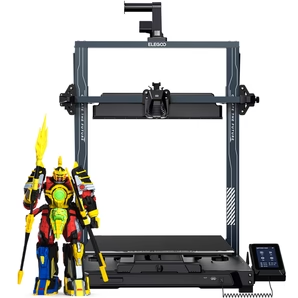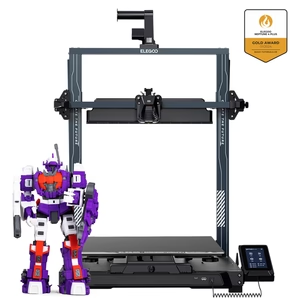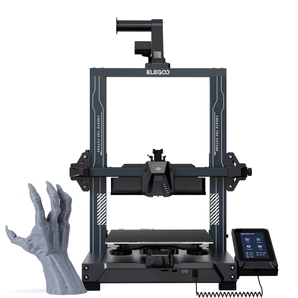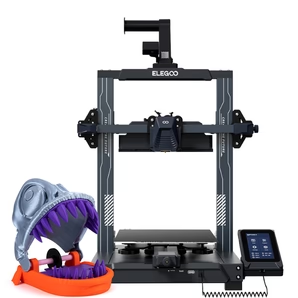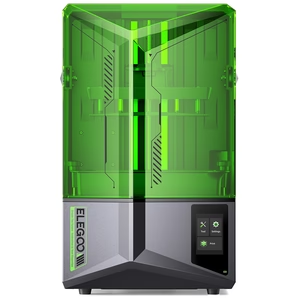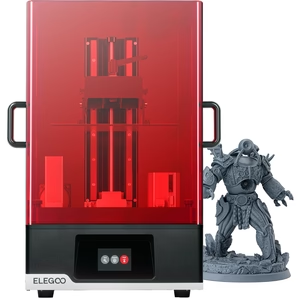Source: https://pixabay.com/
Revolutionary as it may be, 3D Printing does suffer some issues from time to time. Anything that makes use of mechanical parts that also depend on software will always come into a few troubles from now and then. The fortunate part is that these problems can be solved when looked at from all angles.
We are going to look at first layer problems that affect 3D Printing, how they are caused, what they lead to and how they affect the entire process, and the troubleshooting tactics one can do to rectify them. If you have been running into trouble all the time and have no clue on how to proceed, then this is where you should be.
What is a 3D Printing First Layer?

Source: https://www.pinterest.com/
A 3D print has to start from scratch, and this is what is called the first layer. It is a very important part of the entire process because it determines how the entire model will turn out, and therefore, it has to be done right. The first layer is where most problems begin, and if nothing is done, nothing that follows will be solid or good.
There are many complications like gaps and air pockets that get trapped in the first layer that could end up affecting the final shape and the structural integrity of the product. In a nutshell, therefore, getting the first layer right is very important, and if you notice anything going awry, then stop the process and start again.
3D Printing First Layer Problems
As we have mentioned briefly, there are many types of first-layer issues that can affect the 3D printing process. Failure to address these problems will result in a failed print model and when you consider the resources that go into making a single print, that could be a huge waste. The following are the most common first layer problems and how you can counter them.
Print Not Sticking to the Bed

Source: https://cdn.shopify.com/
This is one of the most common first-layer problems that pop up when printing a new model. It happens when there’s adhesion missing between the first layer and the painting surface, and this could lead to having a warped print, or worse, no print other than a messy entanglement of plastic filament on the bed. The following are the most common causes of a print model sticking to the platform..
A Platform That’s Not Level
If the printing platform is not level, you run the risk of having the nozzle to bed distance being different across various locations on the bed. These variations are what cause these issues of not sticking to the bed. The following are some of the ways you can fix this issue.
- Heat up the bed and nozzle to their right printing temperature to make sure that the nozzle is clean before any filament is squeezed out.
- Move the heated nozzle towards the first corner of the bed.
- Place a piece of paper between the nozzle and the bed and loosen the bed level until you see some drag when the paper is moved.
- Do the same to every corner as you make screw adjustments until you are satisfied with the bed.
Warped Platform
This happens when all the random posts on the bed are off, causing the entire platform to be not straight before printing begins. The easiest way to figure out if the bed is warped is to use a steel rule, place it on the bed and look out for the gap between the bed and edge. This could affect the distance between the nozzle and the bed, and any printing that’s done will be off slightly, deforming the product. The following are some ways you can fix this.
- You can counter this by printing a super thick first layer that will offset the imbalance.
- Try using a raft when printing if the first attempt fails. This will level the bed and reduce the nozzle distance to the bed, increasing the reliability.
Nozzle Too Far Or Too Close
The distance between the printing bed and the printer nozzle has to be right for proper printing to be done. This distance keeps changing depending on how big the model is turning out to be. If the distance is too short, the filament will overshoot. If it is too far, the filament will solidify before it hits the bed, and this will create weakness in the structure. To fix this, simply calibrate the distance depending on the type of object you are printing.
First Layer too Fast
Sometimes the printing speed can be a liability, and this is manifest more prominently in 3D printing. This happens when the extruder is unable to keep up with the pushing filament, and this will overwhelm the laying of layers on the printing bed, causing the 3D printing filaments to misalign per each other, causing structural issues. To fix this, try the following troubleshooting techniques.
- Calibrate the speed to ensure that the extruder and the pushing filament are in sync. This will ensure that every filament line that’s put down is aligned over each other.
- Every printer has a slicer that dictates the speed of some parts and accessories, ensuring everything is set to the right speeds for uniformity.
Prints Sticking Too Much

Source: https://cdn.shopify.com/
The same way that prints may fail to stick on the bed, they can do the opposite and stick way too much and that would be another problem. Prints sticking too excessively on the bed is very common and is due to a number of reasons that are outlined below in detail.
High Bed Temperature
3D Printing relies on plastic products, and they are usually susceptible to high heat. If the bed has a high temperature, it means the filament will melt way too much, and this will cause the base of the first layer to stick to the bed due to increased adhesion. The following are some of the ways you can fix this.
- Ensure the temperature of the bed is just right. Not too low and not too high. There are ways you can calibrate this the right way.
- Consider increasing the speed of laying down the first layer. If the printing is fast, the heat may be distributed into the layers being laid down and reduce the chance of the base sticking to the bed.
Nature of Material
Some resin materials naturally tend to stick to the bed even when the temperature is right, and the bed is clean. These materials are the type that has a very low melting point which makes it hard for the temperature to be calibrated to the right values. The best way to fix this is to only use the materials that are recommended for your 3D Printer. This information usually comes when you buy the printer and if it is not clear, get in touch with the manufacturer for advice.
Lack of a Releasing Agent
To make work easier, sometimes, you need to use a releasing agent. This is a special kind of liquid, like a printer lubricant, that is placed on the bed before the printing is done to create a thin buffer zone between the filament being laid down in the first layer and the hot printing bed. This ensures that once the printing is done, the model can be removed easily without any part of it sticking to the bed. To counter this problem, always use a thin layer of vinyl-based hair spray coating on the plate before the printing begins to act as a release agent.
Filament Not Feeding Properly

Source: https://cdn.shopify.com/
The ability of the extruder to constantly feed the correct amount of material at any given time is what determines a good print, but there are things that can get the best of that, and one of them is the inability of the filament to feed the material properly on the plate bed. Messing up with the filament will always ruin the final print starting from the very first layer. You can always tell if something is wrong by listening to the extruder motor. Any unfamiliar noise it produces could be an indication that the filament is not feeding properly.
To counter this, try using an extruder that is not faulty and one that is able to keep up with the speed of laying down the filament on the bed. The following are common causes of this issue.
Bowden Tube Issues
This is when there is debris inside the Bowden tube, a very important part of the entire setup. This debris ends up blocking the inside of the tube, causing friction and interfering with how the filament is fed through the nozzle onto the bed smoothly. Another common Bowden tube issue is when the tube is not pushed sufficiently into the HotEnd or if the tube is frayed in some way. To counter this, consider using a longer and wider tube or try straightening the path to open the way for the material to be released.
Faulty Motor
Sometimes the motor, which provides the entire setup with the motion it needs to spread the filament on the bed, may be faulty. This can be characterized by erratic movements that make it move back and forth even without any filament being loaded. This could be a result of a motor with a loose cable or pin. A faulty motor doesn’t just affect how the filament works and how the first layer is laid down. If it becomes erratic enough, it may wreck the entire printer.
This can be fixed by switching the 3D printer off and allowing it to cool down for a while. You should also check if there’s any part broken and have it fixed by a professional. When switching the primer off, always follow the laid down procedures to allow more time to slow down to a complete stop.
Clogged Nozzle

Source: https://cdn.shopify.com/
A clogged nozzle means the material cannot be released onto the printing bed. There are many reasons that can lead to a nozzle being clogged; overuse without cleaning, a broken end, among many other things. You can tell the nozzle is broken by looking at how the extruding process is done if it is under extruding or the nozzle opening is blocked by particles. Some of the other common causes of the clogged nozzle include the following.
- The nozzle distance is too close to the printing bed.
- The filament is printed too hot.
- There’s dust and dirt in the extruder HotEnd.
- A contaminated filament
- The filament is used to print several things at different temperatures without cleaning.
- Switching filament material or the brand without doing any cleaning in between the changes
- Using wood filament.
So how do you fix this? By doing the following quick steps
- Do regular pre-emptive cleaning
- Use filament filter
- Keeping within the recommended HotEnd temperatures for each filament that you are using.
- Using slightly wider filament nozzles.
Stringing and Oozing

Source: https://cdn.shopify.com/
This is a situation that occurs when the filament begins stringing and oozing, a condition where the printing is too hot with limited retraction settings. When the printing is too hot, it leads to the filament turning too runny, and this leads to the filament taking too long to cool, and this is what then leads to stringing and oozing. A lack of retraction then means that nothing keeps the runny filament in check, leading to all these problems. This can be fixed in the following ways.
- Increasing the retraction distance in the slicer.
- Increasing the retraction speed. Try throttling it up to 40mm/s if you are not sure.
- Arrange the prints closer to each other and closer to the bed.
- Try increasing the travel speed in the slicer.
- Calibrate the steps and the multiplier.
- Increase the cooling capabilities by adding fans.
- Try printing single objects as opposed to doing mass printing at once, as that will tend to make the printer go hot.
Overheating

Source: https://cdn.shopify.com/
Temperature is a running factor in all of these first layer issues; whether there’s too much of it or too little of it, the printer will always develop first layer issues. Overheating leads to some of the ugliest 3D Prints, and you can detect the problem by a simple observation of the model. It will start melting or getting deformed as the printing continues. You can fix this by trying the following things.
- Increase the cooling capabilities of the printing area by adding fans.
- When starting out the printing process, try starting out colder so that by the time the heating gets unmanageable, the printing is done.
- Try printing slower to give the print more time to cool down.
- You can also set a specific interval per layer to give time for cooling, but this depends on the type of the slicer in the printer.
Elephant's Foot

Source: https://cdn.shopify.com/
This is a very common problem that is characterized by the filament that’s been laid down as the first layer being subjected to excessive heat from the bed, causing the model to flare out on the bed creating a wide base at the bottom resembling an elephant’s foot. The first sign that you are dealing with an Elephant’s Foot is the first layer turning out way too big for the set parameters. This is then followed by a concave indentation. So how do you fix this? By doing the following things.
- Lowering the bed temperature and maintaining the what within the parameters necessary for the materials you are dealing with.
- Increasing the distance between the nozzle and the bed slightly to create more room for cooling.
Deformed Infill

Source: https://cdn.shopify.com/
This is characterized by a regular pattern that resembles a grid and is made of a thin mesh of material that solidifies before the intended cavity is filled up sufficiently. This will affect not only the appearance of the final printed model but also the structural integrity. The main cause of this defect is the down to using the wrong settings or if the structure that you have chosen to go with is not suitable. The following are ways you can fix this.
- Reduce the printing speed until you find the right one for the model you are making.
- Decreasing the skip amounts.
- Increase the width of the infill extrusion.
- Insert some slicers to create a solid diaphragm to add some support.
- Increase the print temperature to keep up with the speed
- Tighten any loose parts like the pulleys and the belts.
Poor Bridging

Source: https://cdn.shopify.com/
Poor bridging is a defect that is a result of printing over long distances over thin air without any support. The balance that is needed to nail this is very hard to attain since the speed and the cooling have to be in line with each other. Poor bridging is manifested by saggy lines that appear on the surface of the model, affecting the aesthetics. The following are some of the things one can do to fix it.
- Increasing the extrusion multiplier for the bridge.
- Try using varying speeds, especially lower ones, for the best results.
- You can also increase the speed of your fans to allow the raw material to harden quickly before dropping and drooling.
- Make sure that the silver is functioning well.
- If you can avoid using bridges in the first place, then it would be better for you. There are a number of 3D printers that don’t need bridges to work.
Conclusion
There are countless other problems associated with 3D Printing. The severity of each varies, and most of them are easy to deal with. The bottom line is that they will always be there even if the printing process follows the written down procedures. To learn more about 3D Printing, check out our website, and all the questions you may have will be answered by our team of experts.



















